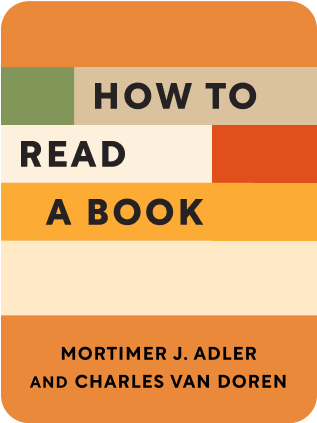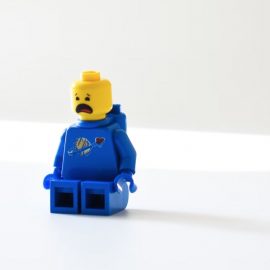

This article is an excerpt from the Shortform book guide to "How to Read a Book" by Mortimer J. Adler and Charles van Doren. Shortform has the world's best summaries and analyses of books you should be reading.
Like this article? Sign up for a free trial here .
Why is syntopical reading the most difficult form of reading? What are the seven major steps for syntopical reading?
According to Mortimer Adler, syntopical reading is the most difficult level of reading because you must first read and analyze a multitude of books, compare them to one another, and understand and compare the opposing viewpoints. In essence, you go from being the student to the master.
Here is everything you need to know about syntopical reading.
The Fourth Level of Reading
The bulk of the book How to Read a Book is about four levels of reading, each increasing in difficulty and complexity. Here they are at a high level:
- Elementary
- This is pure mechanical reading of text and comprehension of what the symbols literally mean.
- This is where most remedial courses aim, and the extent to which reading is taught in school.
- Inspectional
- This is a skimming of the book to understand its main points and its structure. It aims to gain the best understanding of the book in a limited time.
- This is achieved by reading the table of contents, index, and key summaries of major chapters.
- Analytical
- This aims to gain the best understanding of the book in unlimited time.
- Not only should you aim to understand what is being said, but you should also develop a personal opinion about its validity.
- This isn’t necessary if your goal is simply information or entertainment.
- Syntopical
- This aims to compare books and authors to one another, to model dialogues between authors that may not be in any one of the books.
Syntopical Reading
Perhaps the most challenging of all types of reading is syntopical reading, which applies the analytical skills across a multitude of texts. Syntopical reading aims to compare books and authors to one another, to model dialogues between authors that may not be in any one of the books.
The ultimate aim is to understand all the conflicting viewpoints relating to a subject. It’s not to devise your own synthetic answer, as this would merely be an entry into the literature, rather than an understanding of what already exists.
Where in analytical reading you were the student and the book was the master, in syntopical reading you must be the master of your own inquisition. It is now time to determine what is applicable or not to your subject.
The major steps of syntopical reading are:
- Create a total bibliography of works that may be relevant to your subject.
- Many of the important works may not be obvious, since they may not have the keyword in their titles.
- Inspect all of the books on your bibliography to decide which are relevant to your subject, and to better define the subject.
- As you research, you may find that your subject is more difficult to define than you imagined. Imagine love, which has been attributed to everything in the universe. Are you looking at love for men, women, parents, children, mankind, money, animals, wine, football?
- You may have to iterate between reading works and defining your subject.
- Find the most relevant passages within the bibliography.
- Read the book quickly. You are reading it for your ultimate purpose, not for its own sake.
- You may use a syntopicon that organizes passages across works by subject. like Great Works of the Western World.
- Bring the authors to terms with each other.
- Authors in different fields may use entirely different terms that mean the same thing, and the same terms in different fields may mean entirely different things.
- You must establish the controls and bring order to the chaos.
- This is in some sense like translating Latin to French, or making Aristotle talk to Nietzsche.
- Frame a set of questions to which most of the authors can be interpreted as giving answers.
- This may not be explicit – you may have to infer that if the author were asked the question, then she would have answered in this way.
- Define the issues by ranging the opposing answers of authors.
- Often differences in answers are due to different conceptions of the question, and different views of the subject.
- Order the questions and issues to throw maximum light on the subject.
- Show how the questions are answered differently and say why.
- Point to texts that support classification of answers.
- Generally, order more general questions before less general questions.
- Relations between issues.
- Avoid trying to assert the truth or falsity of any view – this fails the goal of the syntopic reading to be objective.
The authors suggest omitting imaginative works from syntopical reading, because the propositions are obscured by plot and are rarely explicitly attributed to the author (a character’s speech could be satirical).
The ideal is to be objective, but this is difficult to uphold, especially in subtle ways like the summarization of arguments and the ordering of answers. The antidote to this is constant reference to the actual text of the authors.
Example: The author’s syntopical reading on Progress
Coming to terms: progress is used primarily to indicate change for the better, though a minority referred to is as negative changes. The authors then had to refer to the latter as “non-meliorative advances” rather than progress, thus changing the original authors’ term.
The major question is, does progress occur in history? To this the major answers are 1) yes, 2) no, 3) we cannot know.
* However, there are quite a few ways of saying each of these.
* There is also controversy: 1) is progress necessary, or contingent on other occurrences? 2) will progress continue indefinitely? 3) is there progress in human nature as well as in human institutions?
Finally, there are 6 respects in which progress occurs: 1) knowledge, 2) technology, 3) economic, 4) political, 5) moral, 6) in the fine arts.

———End of Preview———
Like what you just read? Read the rest of the world's best book summary and analysis of Mortimer J. Adler and Charles van Doren's "How to Read a Book" at Shortform .
Here's what you'll find in our full How to Read a Book summary :
- How to be a better critic of what you read
- Why you should read a novel differently from a nonfiction book
- How to understand the crux of a book in just 15 minutes






